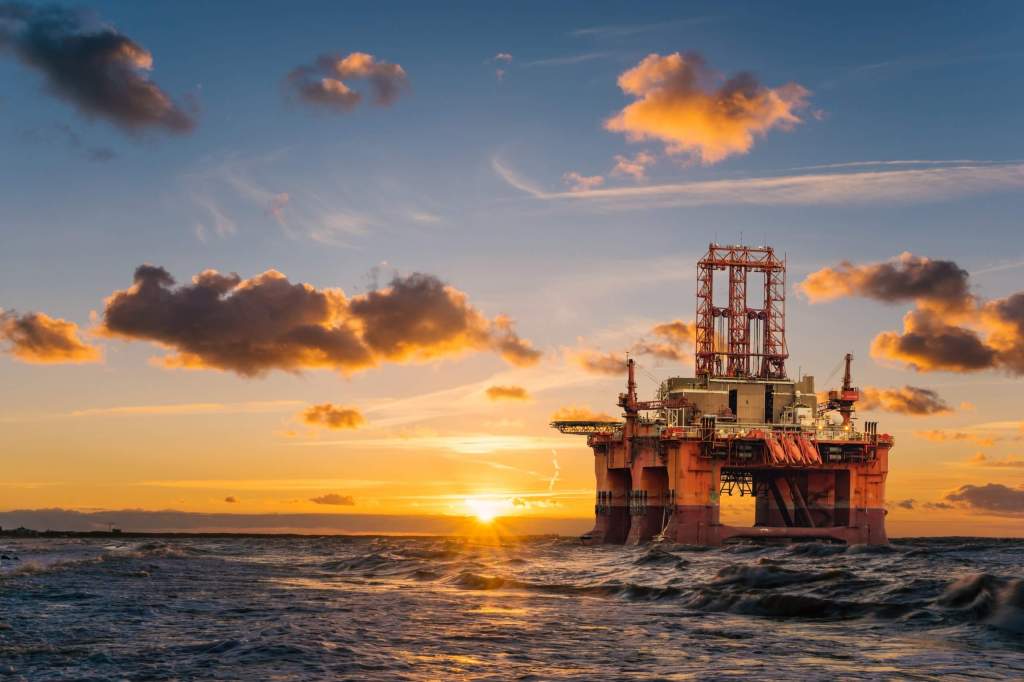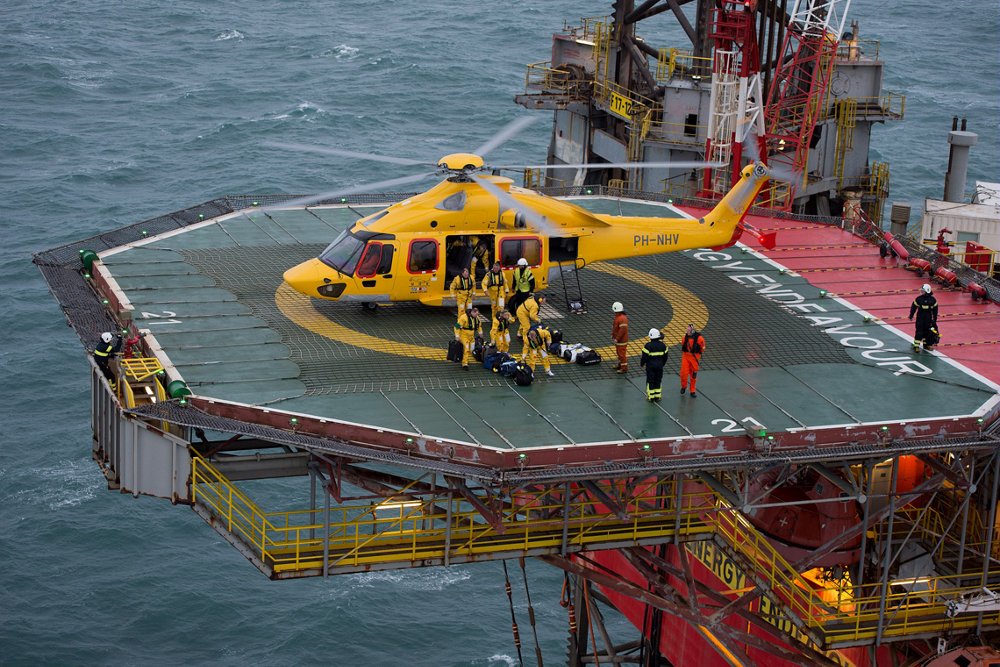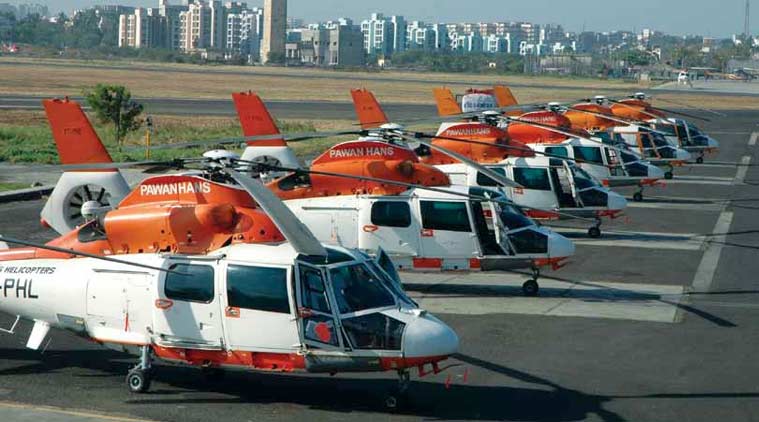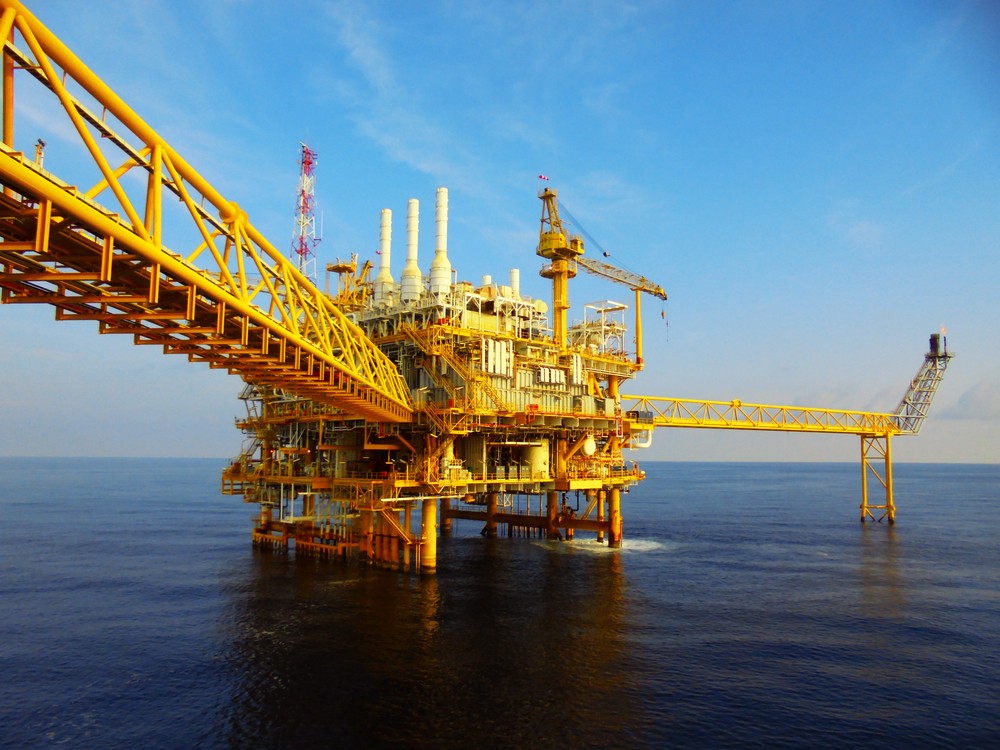“Bhai jaldi se 100 ka normal wala petrol daal de”
“Tank full kar dena, card payment lete ho na”
“Sir yahan sirf diesel hi milta hai”
“To book a refill press 1”
We’d have encountered all or a minimum of one among these conversations in our day-to-day life. All folks would immediately recognise about what we are talking here.
Yes, these are the fuels of our life.
These amenities touches every aspect of our life – Petrol, Diesel, LPG, CNG, to name a few and for getting them, not much of effort is required. Just go to a fuel station and fill the tank and go zoom. For LPG even that hard work is not required, just book a refill and is home delivered.
But have you ever wondered, where from do these come from? I am sure many of you may be knowing that we extract them from oil wells, dug in earth. But is it just that simple? we will see. I, as an oil-man, shall take you on a journey to an oil rig, where we toil to keep the flame burning.

An offshore Oil Rig PC-Lindsey Hiefield
Day-One
So, let us start from my first day at work. On joining the company, we were allotted on an offshore Oil and Gas Rig (one type of installation, the other type is called a Platform) in a 14 days on/off shift pattern.
After completing the paperwork and documentation formalities, we were told that we would be going to offshore by a chopper / Helicopter. This info sparked a mixed feeling of nervousness and excitement, and we could feel the adrenaline gushing through our veins. I visualised the scenes from all the action movies I had watched.

A chopper on an Offshore installation. PC:Airbus.com
No one amongst us, has ever gone near to a helicopter, let alone flying into it. The most proximal experience anyone of us had of it was watching one politician or other landing and taking off in it.
Nevertheless, our superiors put the excitement on hold, as we were instructed to attend few mandatory safety trainings before our adventure ride. We were told to participate into these trainings seriously and not to bluff as the learning that we get may only save us in the high seas as there is no place there to escape.
So, we were busy for next few days taking part in those trainings. We were trained in all the safety guidelines, procedures, self-rescue(in case of any mishap), fire fighting, first aid etc.
Then, we were issued the working uniform and safety shoes. The working uniform is called differently as dungaree, coverall, overall, boiler suit etc. It is a single piece uniform, which you might have seen in real or in films, worn by mechanics in a garage.
The D- Day
Then, finally the D-day arrived. We went to the heliport from where the helicopters are operated to & fro offshore installations. There, we were frisked at the entry gate and our bags were scanned. As we went & checked in (yes here also, just that the procedure is very formal and is actually called reporting), our body weight and baggage weights were taken.
After some waiting, the names of our respective installations were announced. Now these installations are just like the destination stations when we take a flight, they are at different locations, but in the sea. Alright, so then we were issued our boarding passes.
Again there was a security check and the officer stopped us.
Whatt!! “No deoderent/perfume allowed”,
“No phone with camera allowed”.
Oh damn!
But rules are rules, so we had to drop all these items. After that, we were shown a video for safety briefing. This explained as what is to be done if helicopter gets crashed (yeah, that is one of the probable mishaps). Although sounds scary, you have to get used to it, that’s the real world.
Then, again our names were checked in the manifested Pax list. Finally we were standing before a big flying machine with large fan like blades. Many helicopters of various sizes were parked in a big ground like area. Some of them had wheels and some didn’t. Ours was one with wheels.

The Pawan Hans Squad PC: pawanhans.co.in
We were guided for how to approach for boarding and were given life-jackets, to be put on for our journey, these were to be used in case chopper ditches into water. Ahem! are you serious!!! God save us.
The captain explained us the safety procedures and we were assisted by the ground crew for proper boarding, seating and fastening our seat belt. Now you see that it was not exactly the same as boarding a flight. Helicopter door was small and floor was high, so we had to lift ourselves with help of a belt handle and at the same time approach to the seat ducking our head. The seats were very closely packed and we sat compacted with shoulders touching shoulders. Also, the seat belts were a bit complicated, and we had to insert three parts in the metal cap instead of one as in a normal flight. The ground crew and captain ensured we are sitting properly and seat belts are all fastened. The doors were closed and it was announced that we were ready for take off! The helicopter was switched on and the blades started rotating slowly and getting faster gradually with a loud whirlwind sound. Our chopper moved to the runway and then got aligned. As soon as the pilot got clearance from ATC, he pulled the joystick and here we go!

PC: Dan Megna
We flew over the sea, through the clouds. As a helicopter is smaller than aeroplane, you can very well feel even the small manoeuvres that the pilot makes. Sudden rise, drop, tilt everything gave me goosebumps. I looked around, the seasoned guys were sleeping, but I was nervous. In fact secretly I was praying!
After 45-50 minutes of ride, the descent started. Huh! nothing is visible, are we landing on water!! I couldn’t even ask the passenger beside me, the rotor sounds so much that you can’t converse. After sometime, a dot like structure was visible. And slowly it got bigger, I could see a helideck just like nowadays we have on top of big buildings.

PC: Marine Online
Our chopper landed on it and we got out. The helideck was like a very big flat metal plate, covered with thick rope net, on which chopper lands. Directed by the crew there, we took our luggage and went down by stairs to the accommodation area. The stairs were also a unique experience. While walking down, I could see the sea directly, unhindered view, shocker, if you slip, take a dip!!
At the Rig
We were taken to the briefing room where we exchanged our greetings and our life jackets with the outgoing crew. They boarded the chopper for their return journey to Home Sweet Home.
Here at rig again we were given safety brief regarding all procedures and precautions to be taken, the PPEs to be worn in work area. The emergency alarms etc. Then I was issued the PPEs – hard hat, safety boots, glove and goggles.

Lodging arrangement inside a rig.
Our room and bed were allotted to us. On a rig, the rooms are small with bunker bed arrangement. One bed to each person, so a room can be shared by 2-4 persons. There are common shower/toilets for all and/or one shower/toilet is shared between two rooms. A mini closet is there to keep our belongings in.
We settled in and were directed to the incharge’s office. We met the incharge called as Offshore Installation Manager. The other crew were old ones so they exchanged routine customs and went to there respective work stations. Being a new entrant, I was thoroughly explained about the work, safety and what is it like to stay there. Then I was introduced to my senior colleague. After freshening up, I went outside with my senior, wearing all PPEs with coveralls of course and was shown around the rig.

The gigantic structure of an offshore Oil and Gas Installation. PC: Red ivory/Shutterstock
A rig is a giant structure of steel, with some wood, glass and plastic here and there, but mainly an iron monster. The floor, walls, doors, stairs, walkways, tables, benches everything is of iron & steel (yeah our beds also, but with foam mattress…:).. Huge machines everywhere and lots of stairs to climb. All this in midst of the blue water and nothing else to see around except, you guessed right, water.
There were steel bunks, that were workstations for different kind of jobs . There was the most essential part, called as rig floor, topped by derrick mast. From here, the vital job of drilling of an oil-well is carried out.

Working in a Rig
Then there were big pumps, motors, generators, chemicals, huge cranes, heavy tools and equipment. The work and functions of each and every thing there was explained to me by my senior.
We came back into accommodation area and he showed me the recreation room that had a T.V., newspapers, magazines etc in it. We could come here when we are off duty.
The phone room was there from where we can call at fixed hours. At offshore, communication is a prized achievement because it is not always available on demand. Two phones were there for nearly 100 people present on rig. So you always expect a queue for making a call, and short duration of same. Nevertheless something is better than nothing. I immediately requested my senior, and granted I called home informing that I have reached safely.
Then we went to the most important part of accommodation area, the food hall, called as galley in offshore. Here you get all sorts of food items, fruits, juices, milk etc.

The Galley. PC: the_fifo_moose
We had a whole some meal there and went to our workstation where he explained my job to me.
At the rig we work in two shifts of 12 hours each, 7 days shifts and 7 night shifts. An oil rig drills oil & gas well, from which later on oil & gas are produced.
The production is part is done by another type of installation, called as Process Platforms which extracts oil & gas from well and transport them to process plants. Just like many of you have seen a bore-well being dug for ground water. The principle is same, instead of water we dig for oil & gas. But the processes involved are on a very large and professional scale involving lot more technical specialisations, coordination and efforts from various disciplines.
Logistics also play a very important part especially in offshore installations. Although not directly involved in operations, it is indispensable. All the necessary tool, equipment, chemicals, water, diesel, other consumable items are brought by specialised boats, called as OSV ( Offshore Supply Vessels). Even our grocery, food items and drinking water is transported by these OSVs. Second are the choppers, the only mode for transporting the personnels in & out. Without these, no work may be managed on any installation. These are the heart & soul of offshore.
Although things may seem simple, just dig a well and produce oil, it is not as easy as it sounds. Many operations and complications are involved in it. Working on a rig is physically and mentally demanding. Many heavy tools, equipment, chemicals bags are lifted manually.
Most of the times one has to work in standing position for whole of shift. While drilling, we are exposed to fumes and gases coming from the well. Sometimes blowouts and fire accidents happen (You might have read about Deep Water horizon incident). The risks are real. And that on top of that, you are so remotely placed without proper communication which is nowadays available on fingertips, stresses you out.
But that is the part and parcel of the job.
After all someone has to take the brunt to keep the oil flowing and help the nation growing and we are proud for being a part of it.
PC: All pictures used here have been taken from Google Images. Credits to the respective creators. Cover image: Lucasz Z/Shutterstock

About the Author
Himanshu Deshmukh
An immensely talented and intellectually enriched person. After being associated with an Indian Power giant, he started his current occupation with one of the leading Oil and Gas producers from India in 2012.
Posted in an offshore rig, he in his leisure spend time reading and writing. He loves to travel and is a great singer.
Himanshu can be contacted on his Facebook.



Very nicely written as if I was also traveling. Whatever is written about work is very interesting and was very new to me.
I pray for every success in his life and I pray God to shower his blessings to dear Himanshu.
All the best
LikeLiked by 1 person
Thank you very much for your blessings!
LikeLike
Such an adventurous and challenging life. Loved the entire description. All the best. 😇
LikeLiked by 1 person
Thank you Harsh for your encouraging words.
LikeLiked by 1 person
Very nicely described. Till today I didnot knew how dangerous it is to produce oil or LPG. Great salute to you and all oilmen involved in it. Proud of you and wishing you all safe life and good luck.
LikeLike
Thank you for showing gratitude to the oil industry
LikeLike
Very well narrated Himanshu we appreciate the struggle you go on for the better future of the country really hats off… take all precautions at workplace to avert mishaps.. god bless you
LikeLike
Very well narrated Himanshu we appreciate the struggle you go on for the better future of the country really hats off… take all precautions at workplace to avert mishaps.. god bless you
LikeLike
Thank you Balakrishna for showing the concern
LikeLike
First of all thank you dear Himanshu, to exhibit the world that was oblivion to me. The way you have intrigued about the two parallel human lives, on the soil and off the soil, filled me with the feeling that I never had before.
The task that you and ur team is performing there at rig is commendable. Salute to you and ur team.
Best wishes from core of my ♥️
LikeLike
Thank you, I am obliged.
LikeLike
Himanshu, you and your team actually giving your best efforts to make our nation run. Your sincere hardwork matters a lot for us. Hats off to your spirit. Please take care while working in such challenging conditions. Some works worth more than just an appreciation and believe me you are the one of them who makes the difference.
Take Care
LikeLiked by 1 person
Thank you Sameer for all the good and caring words
LikeLike
Thank you Sameer for all the good and caring words
LikeLike
Great blog post. Liked the way you described offshore operations. It literally took the reader to the rig and gave an insight to how working at rig would look like. Kudos!
LikeLiked by 1 person
Thank you
LikeLike